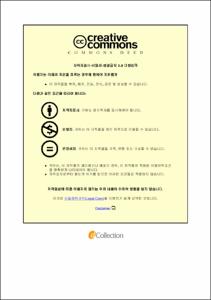Destination Branding and Marketing Strategies
- Alternative Title
- 관광지 브랜딩 및 마케팅 전략: 싱가포르와 베트남의 비교 연구
- Abstract
- Travel and tourism has become an increasingly important area of study in the field of international relations. Beyond the mighty economic sway it holds, now accounting for one in ten jobs worldwide, 30% of global export services, and 10.2% of global GDP, the academic community has come to recognize tourism for its importance in the process of facilitating greater understanding between different cultures and national origins. Among the destinations reaping the greatest economic benefits of a healthy tourism sector are those that have realized the importance of developing a well-planned and wisely-implemented branding and marketing strategy to create a destination image that resonates and engages with both potential and return visitors in the increasingly crowded tourism segment. It is on this premise that this paper is built and it is from this starting point that the following pages will conduct a comparative analysis of the branding and marketing efforts by the Southeast Asian countries of Singapore and Vietnam. The initial sections will first analyze Singapore, a small city-state of roughly 5.9 million people that in addition to becoming one of the most visited destinations in the world, has also come to be widely-regarded for its branding and marketing strategies. It is against this backdrop that the primary aim of conducting a comparative analysis of Singapore’s nearby neighbor, Vietnam is formed, in an effort to assess the historical and contemporary state the Vietnam’s branding and marketing efforts in the area of tourism. This assessment and the recommendations that follow, will show that Vietnam has yet to scratch the surface of what is required in the field of destination branding and marketing, likewise demonstrating that if it hopes to reach its full potential as a travel destination that resonates with tourism consumers on the level of its nearby neighbor Singapore, it must increase its efforts and its commitment to the task considerably over the coming years.
여행 및 관광은 국제 관계 분야에서 점점 더 중요한 연구 분야로 부상하고 있다. 그것이 미치는 거대한 경제적 영향력을 넘어 여행 및 관광 분야는 오늘날 전 세계 10대 직업 중 하나로 세계 수출 및 서비스의 30%, 세계 GDP의 10.2%를 차지하고 있으며, 학계는 서로 다른 문화와 국가적 기원 사이에 한층 깊은 이해를 돕는 과정에 있어 관광의 중요성을 인식하게 되었다. 관광 분야에 있어 가장 큰 경제적 이익을 거두고 있는 관광지들에는 점점 더 복잡해지고 있는 관광 부문에서 잠재 고객 및 재방문객들과 공감하고 이들과 관계하는 관광지 이미지를 만들기 위해 훌륭한 기획력을 바탕으로 현명하게 구현된 브랜딩 및 마케팅 전략을 개발하는 것이 중요하다는 것을 인식한 이들이 있다. 이러한 전제를 바탕으로 이 논문은 동남아시아 국가들 중 싱가포르와 베트남의 브랜딩 및 마케팅 전략에 관한 비교 분석을 수행하였다. 먼저 약 590만 명의 인구로 이루어진 소규모 도시국가 싱가포르를 분석했다. 싱가포르는 세계에서 가장 많이 방문한 관광지 가운데 한 곳으로서 이러한 성공을 거두게 된 데에는 브랜딩 및 마케팅 전략이 도움을 주었다고 폭넓게 인정받고 있는 곳이다. 그리고 이를 배경으로 관광 분야에 있어 정부의 브랜딩·마케팅 노력과 관련, 그 역사적·현대적 상황에 접근해보고자 싱가포르의 인근국가인 베트남에 관한 비교연구를 수행하였다. 그 결과, 이를 통한 평가와 제언으로 베트남은 아직까지 브랜딩 및 마케팅 분야에서 요구되고 있는 바를 현저히 충족하지 못하고 있으며, 이에 따라 관광 소비자들과 공감하는 여행 목적지로서 인근국가인 싱가포르 수준으로 완전한 잠재력에 도달하기를 희망한다면, 향후 몇 년 간 상당한 노력과 헌신을 기울여야 할 것으로 사료된다.
- Issued Date
- 2018
- Awarded Date
- 2018. 8
- Type
- Dissertation
- Publisher
- 부경대학교
- Affiliation
- 부경대학교 대학원
- Department
- 대학원 국제지역학과
- Advisor
- 안상욱
- Table Of Contents
- I. CHAPTER ONE: Introduction 1
1.1 Economic Impact of Tourism 7
1.1.1 Employment Sector 11
1.1.2 The Business Sector 16
1.2 Background to the Research Problem 18
1.3 Research Aim 20
1.4 Research Questions 20
1.5 Scope of Study 21
1.6 Significance and Contribution of Research 22
II. CHAPTER TWO: Review of the Literature 23
2.1 Overview 23
2.2 International Relations and Tourism 26
2.3 Defining Tourism 32
2.4 Defining a Tourist 36
2.5 Defining a Tourism System 39
2.6 Governance 41
2.7 Destination Brand Image 52
2.8 Destination Marketing 53
2.9 Conclusions 56
III. CHAPTER THREE: Methodology and Research Design 58
3.1 Methodology 58
3.2 Research Design - Framework of Analysis 59
3.3 Theoretical Foundation 60
IV. CHAPTER FOUR: Tourism in Singapore and Vietnam 62
4.1 An Overview - Singapore 62
4.1.2 Singapore Tourism 1960’s to present 69
4.1.3 Conclusions 88
4.2. An Overview - Vietnam 88
4.2.2 Colonial and Postcolonial 92
4.2.2 Vietnam Tourism - 1960’s to present 99
4.2.3 Conclusions 109
V. CHAPTER FIVE: Analysis 111
5.1 Branding and Marketing - Singapore 112
5.1.1 Rebranding 113
5.1.2 Current Brand Messaging 126
5.1.2 Brand Narrative 127
5.1.3 Audience Targeting 129
5.1.4 Message Delivery 130
5.2 Branding and Marketing - Vietnam 134
5.2.1 Rebranding 140
5.2.2 Brand Narrative 149
5.2.3 Audience Targeting 154
5.2.4 Message Delivery 155
5.3 Branding and Marketing Conclusions 160
5.4 Crime and Security 165
5.4.1 Crime and Security - Singapore 171
5.4.2 Digital Security 173
5.4.3 Health Security 175
5.4.4 Infrastructure Security 177
5.4.5 Personal Security 179
5.4.6 Branding and Marketing 180
5.5 Crime and Security - Vietnam 181
5.5.1 Digital Security 182
5.5.2 Health Security 186
5.5.3 Infrastructure Security 188
5.5.4 Personal Security 191
5.5.5 Branding and Marketing 191
5.5.6 Conclusions 192
5.6 Ease of Entry 195
5.6.1 Overview 196
5.6.2 Singapore 197
5.6.3 Vietnam 199
5.6.3 Conclusions 202
VI. CHAPTER SIX: Conclusions, Recommendations and
Suggested Areas for Future Study 205
REFERENCES
- Degree
- Doctor
- Files in This Item:
-
-
Download
 Destination Branding and Marketing Strategies.pdf
기타 데이터 / 6.67 MB / Adobe PDF
Destination Branding and Marketing Strategies.pdf
기타 데이터 / 6.67 MB / Adobe PDF
-
Items in Repository are protected by copyright, with all rights reserved, unless otherwise indicated.